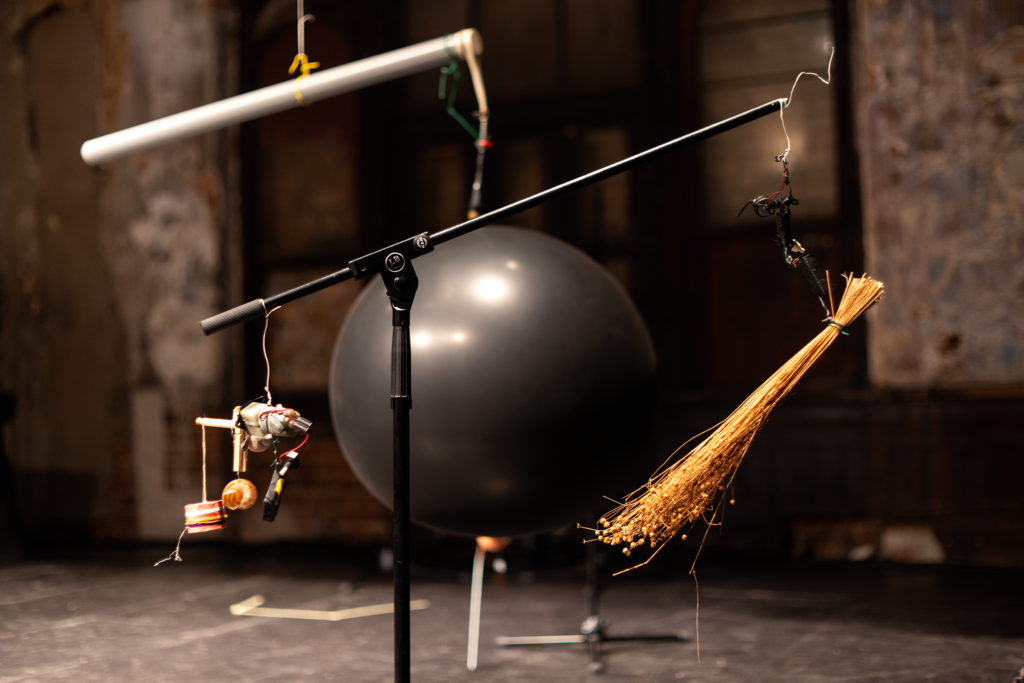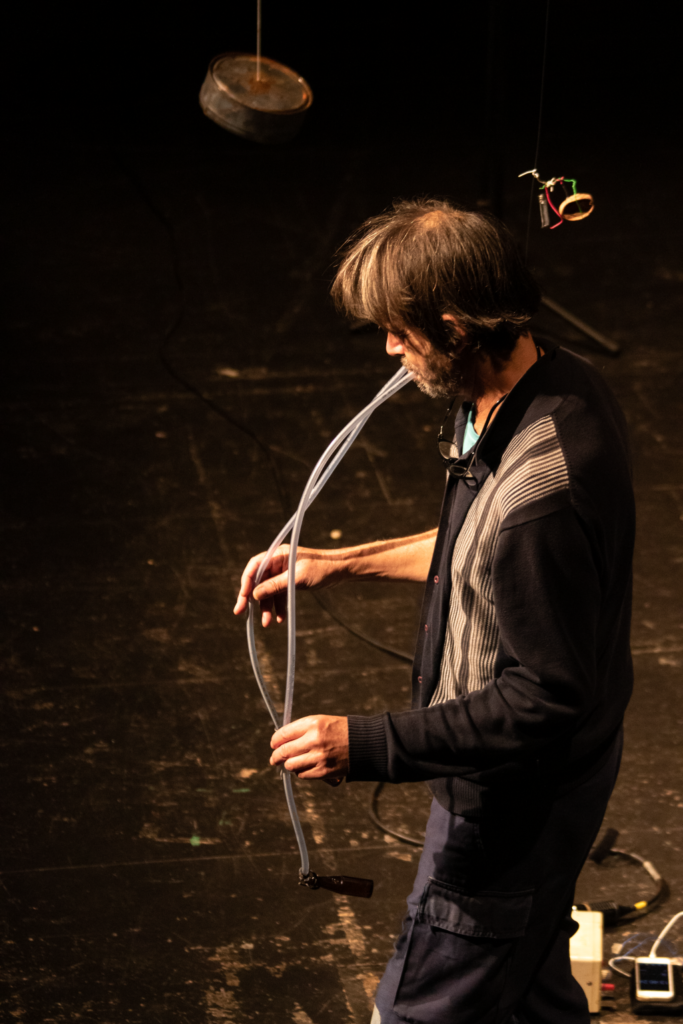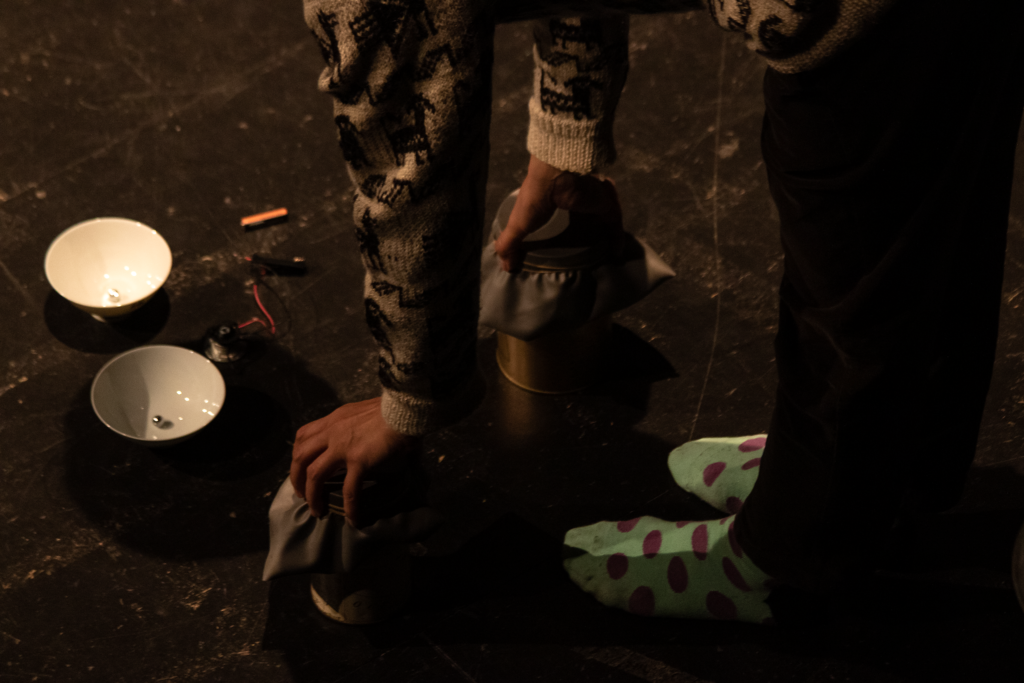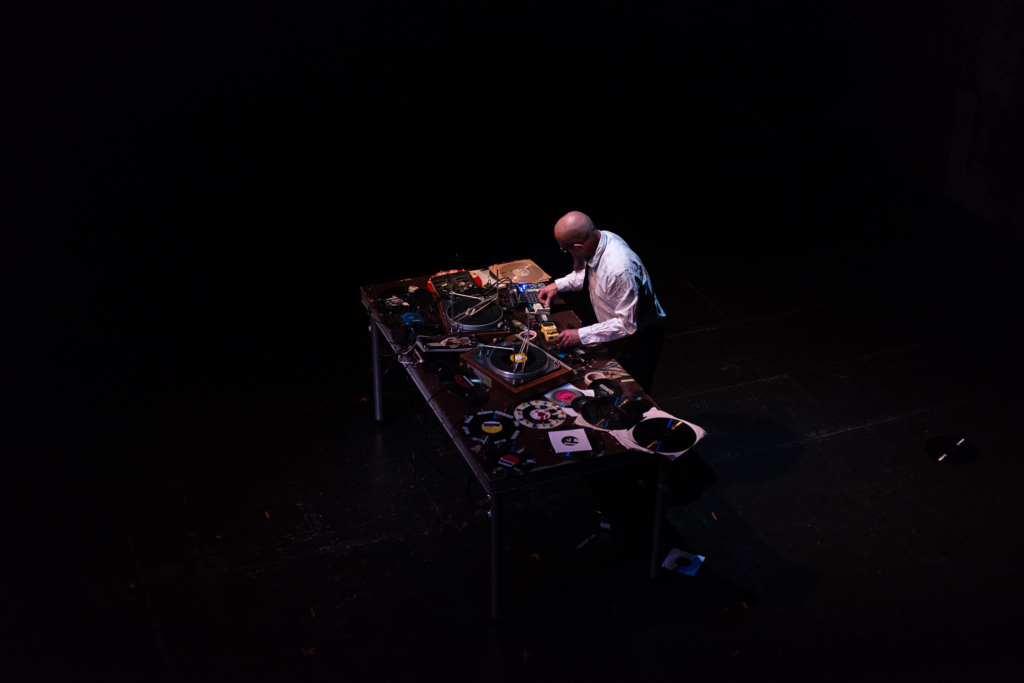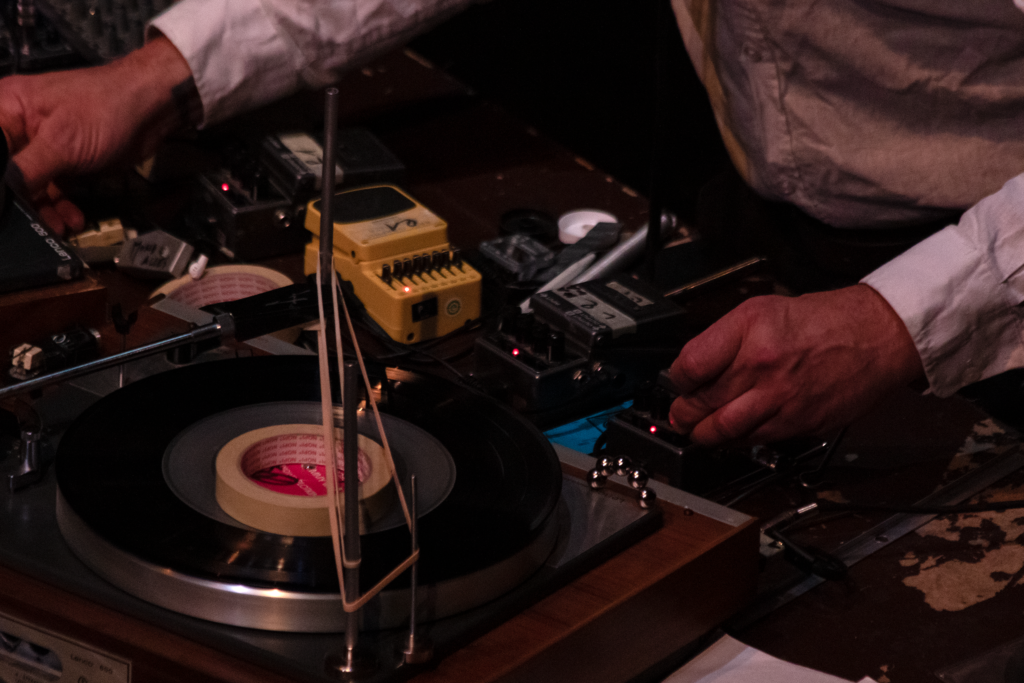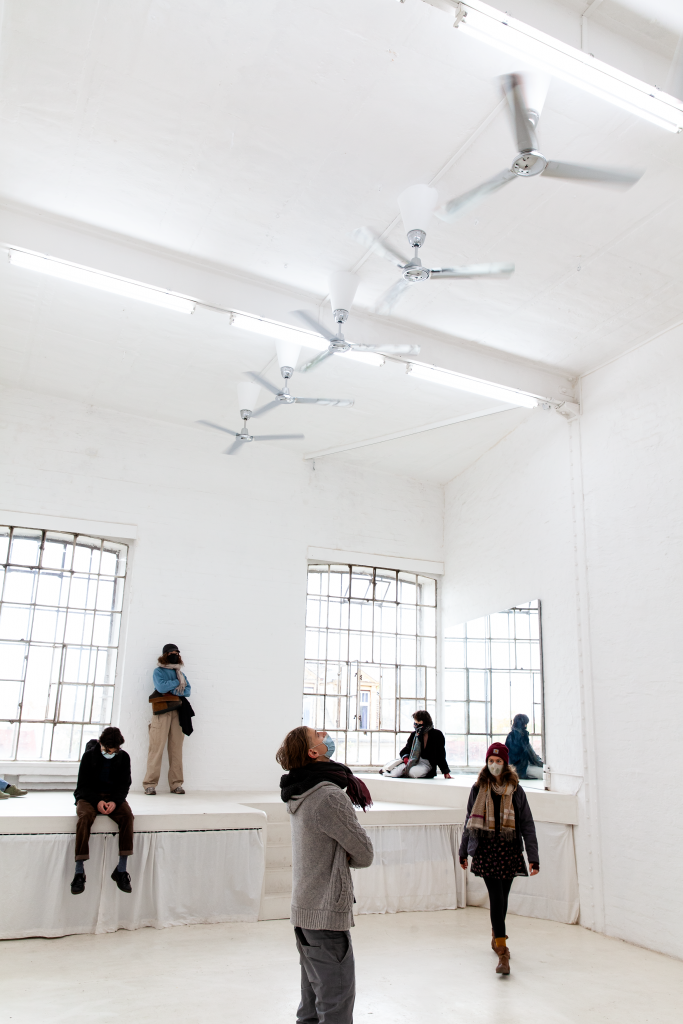The fourth edition of the transdisciplinary Seanaps Festival took place from October 15 to 18, 2020 in Leipzig, Germany. The festival accurately describes itself as an homage to “life and its sounds, as a vibrant mixtape for curious ears, created in interaction with a global experimental music scene—an intense moment of collective listening.” It is a mediator ”between music, sound art, and the living environment—presented, explored, and discussed through different formats.” The festival cleverly tackled the ever-present conundrum of COVID-19 and its impact on the “live” event by breaking up the formatting of the activities into spatially dynamic platforms. The festival engaged a wide range of work through internet radio, off-site installation, and precisely measured and socially distant performances.
The festival began on Thursday morning at the Radiolab, a stationary hub of discourse navigated by internet radio practitioners, representing Radio Corax from Halle, Cashmere Radio from Berlin, and Sphere Radio from Leipzig. The group comprised Tina Klatte, DJ Schluct, Elizabeth Davis, Simon Clement, Kaya Peters, Nico Fleischer, and special guest Jasmina Al-Qaisi. The Radiolab served as a crucial connective tissue for the weekend, giving insight into the work of the evenings’ performances; as well as giving insight to the ideological framework around the event. Specific audio works were commissioned for the festival to be broadcast. A highlight of the first day of this programming was choosing the brilliantly adaptable sonic force that is Nicholas Dawson’s Bookworms project [see zweikommasieben #22]. Amorphous and hallucinatory, sounds of a stretched damp air hissed quietly as they were braided into potentially sampled (?) orchestral moments—sonics like that of Bartok or Stravinsky scoring a ballet, found on warped VHS tape in a thrift store. It is worth noting I have been proximal to the work of Dawson as Bookworms for over half a decade. Dawson possesses an inspiring elasticity in his creativity, where his capacity tears a hole in what is projected onto and expected of him. Seanaps boldly took on a number of performers, myself included, to emphasize an opportunity to create, rather than re-create the usual fare expected of them.
The first evening I loitered around the wildly eccentric performance hall, one usually used so charmingly for puppet theatre. The walls of the hall were stone and peeling, the repurposed space intimated its previous use as a ballroom and a factory. This repurposing of space with an interchangeable capacity for production and sociality was perfectly embedded in its architectural DNA, to serve as an apt vessel for the coming works. The evening’s performances were set at a high bar, by the collaboration of Pierre Berthet[see zweikommasieben #18] and Rie Nakajima. The stage they owned was crossed by a fishing-line that supported a set of antithetical trash-mobiles, hoisted, resonant metal buckets, and arrangements of smaller self-crafted engines for detached sound generation. Berthet and Nakajima carefully stalked the stage, barely in acknowledgement of one another, setting into motion a series of acoustic gestures that created a balance of tension and sublimity for an all-absorbing 35 minutes of performance: Nakajima syncopated drips of water with the clicking of differently pitched rocks that reverberated in the room. Berthet faintly harmonized with the strikingly powerful drone of a medicine ball, ever-meticulously deflated through a PVC pipe.
Evening performances continued through the weekend—abstracted industrial turntablism by Strotter Inst., woodwind dissonance exercises from the International Nothing, a wild reverie of folkish post-punk from the mysterious Belgian group Ladr.ache. Offsite, one was treated to spectacularly ambitious sound works that reflected the precarious necessity of intimacy around the festival. Kamil Korolczuk broadcasted “Dance Music for Frogs, Lizards and Insects” via the Radiolab, interjecting levity and play with his compositions of no-input mixing and magnetic tape manipulation. A short walk from the Radiolab offered the minimal installation work “Ventilation” by Louise Vind Nielsen. Here Nielsen plays with the sensibilities of comfort by juxtaposing an open, fluorescent-lit white room with seven functioning ceiling fans high above the floor. Each ceiling fan is installed just slightly too close to the following ceiling fan, creating the inconsistent but inevitable crashing of the reflective metal fan blades.
The incongruity of the minimal, aestheticized space against the dangling mechanical conflict gave me room to pause. What is the grating context Seanaps itself is up against this year? Amidst the gravity of the global pandemic of COVID-19, an ethical dilemma has been broached by artists and organizers internationally. What is the most responsible manner to navigate events taking place in the face of a communicable virus, thriving on the very intimacy that fuels the presentation of live works? While the consensus on how to move forward appears to be deeply polarizing, until a vaccine is concocted and available globally, I would posit that the organizers of Seanaps may have been a shining example of what a “move forward” looks like. Artists, sound engineers, drivers, curators, cooks, radio hosts, and liaisons for the event all were tested and followed strict procedures around mask use and sanitizing. Concerted effort went into optimizing meticulous spatial distance and limiting capacity to insure the safety of guests, hoping to consequently curb any impact inside and (importantly) outside the festival’s attendees. I have no data on the impact of the festival afterwards, but I did leave with one token of reflection. As COVID-19 continues to swell and contract as a presence in our global humanity, gestures of thorough concern and following through with engaged respect can give room to experience those moments that we, as a vast and eclectic culture of night-creatures, cling to and cherish the most. Simply: don’t be an asshole. Wear a mask.
